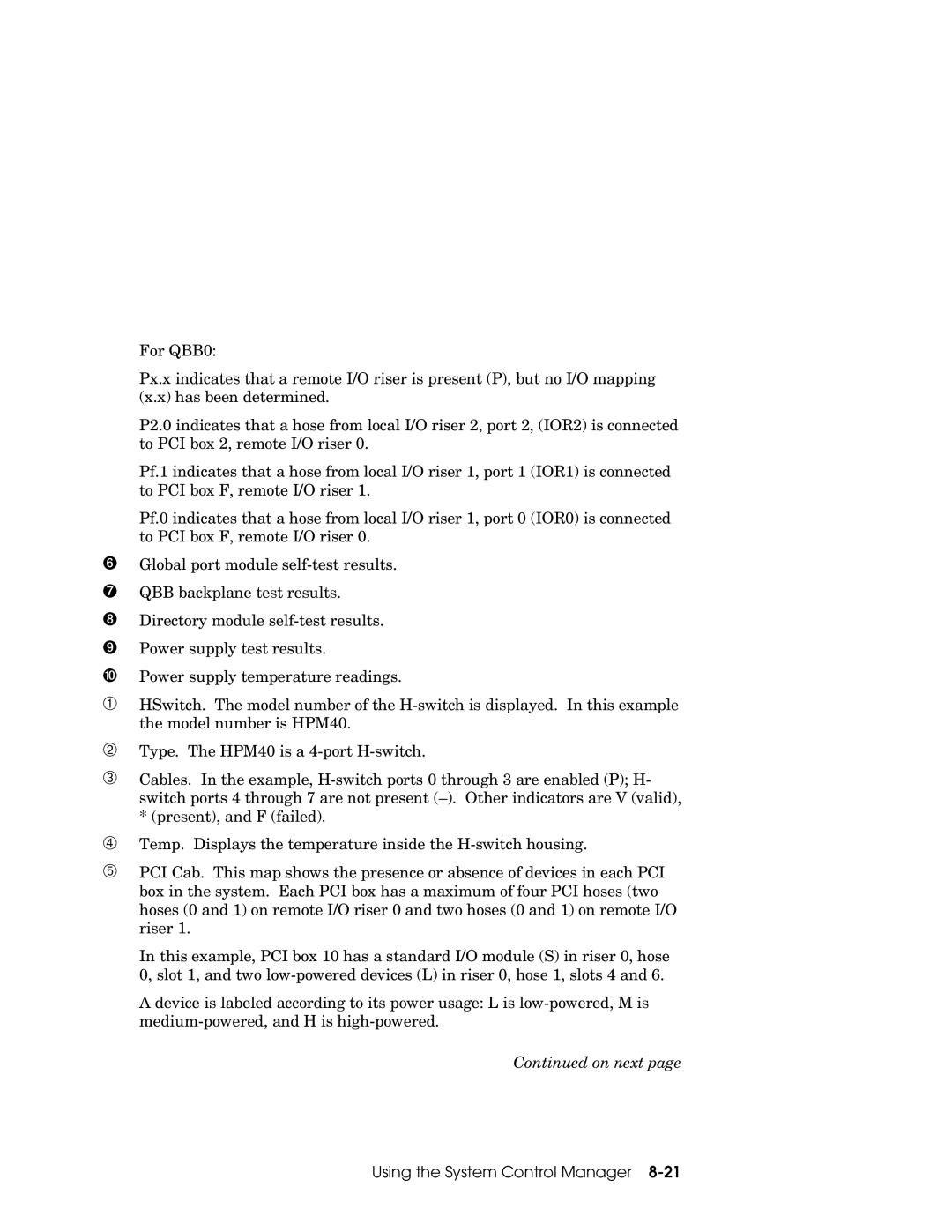For QBB0:
Px.x indicates that a remote I/O riser is present (P), but no I/O mapping (x.x) has been determined.
P2.0 indicates that a hose from local I/O riser 2, port 2, (IOR2) is connected to PCI box 2, remote I/O riser 0.
Pf.1 indicates that a hose from local I/O riser 1, port 1 (IOR1) is connected to PCI box F, remote I/O riser 1.
Pf.0 indicates that a hose from local I/O riser 1, port 0 (IOR0) is connected to PCI box F, remote I/O riser 0.
➏Global port module self-test results.
➐QBB backplane test results.
➑Directory module self-test results.
➒Power supply test results.
➓Power supply temperature readings.
➀HSwitch. The model number of the H-switch is displayed. In this example the model number is HPM40.
➁Type. The HPM40 is a 4-port H-switch.
➂Cables. In the example, H-switch ports 0 through 3 are enabled (P); H- switch ports 4 through 7 are not present (–). Other indicators are V (valid),
*(present), and F (failed).
➃Temp. Displays the temperature inside the H-switch housing.
➄PCI Cab. This map shows the presence or absence of devices in each PCI box in the system. Each PCI box has a maximum of four PCI hoses (two hoses (0 and 1) on remote I/O riser 0 and two hoses (0 and 1) on remote I/O riser 1.
In this example, PCI box 10 has a standard I/O module (S) in riser 0, hose 0, slot 1, and two low-powered devices (L) in riser 0, hose 1, slots 4 and 6.
A device is labeled according to its power usage: L is low-powered, M is medium-powered, and H is high-powered.
Continued on next page
Using the System Control Manager 8-21
